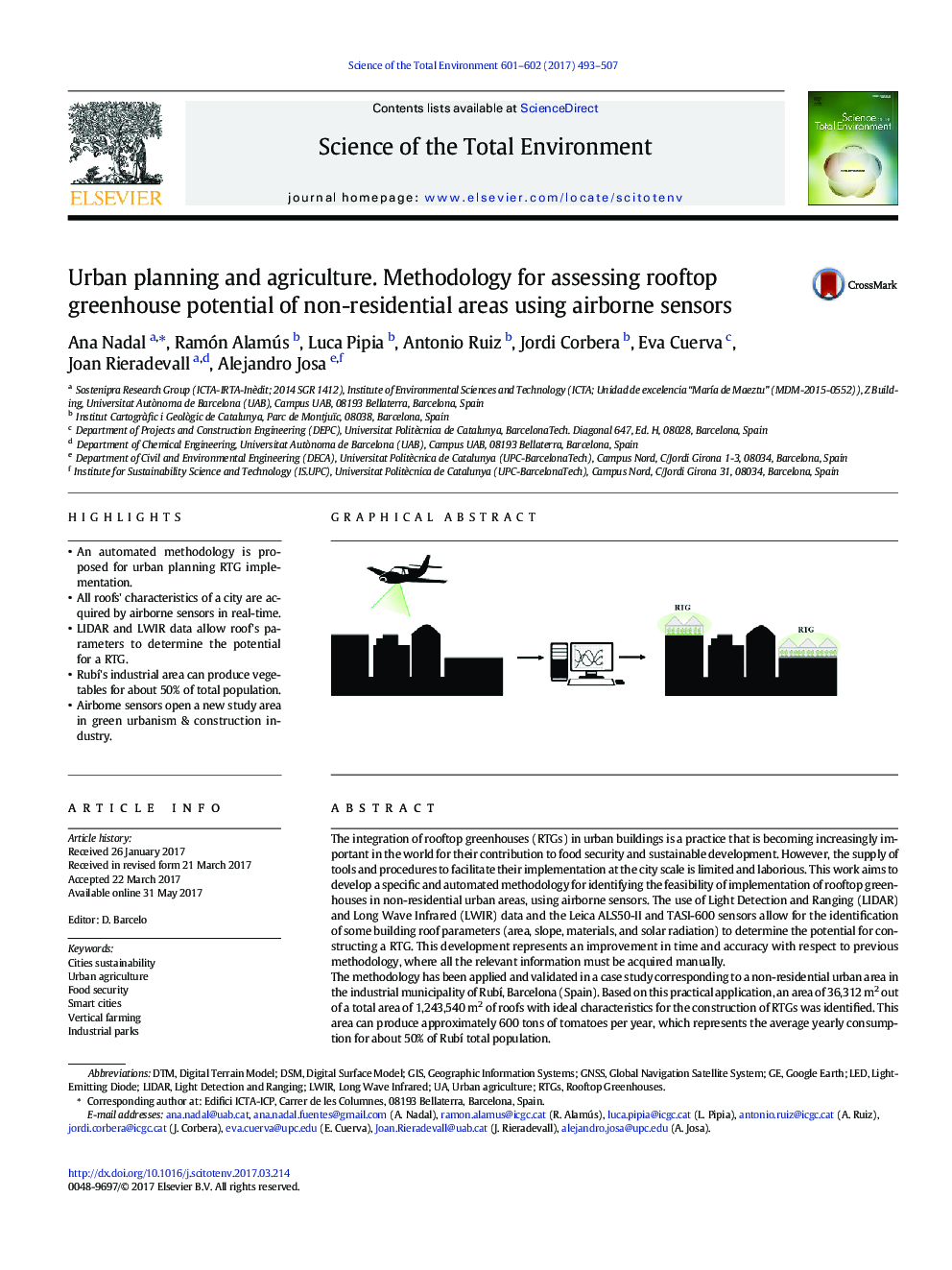| کد مقاله | کد نشریه | سال انتشار | مقاله انگلیسی | نسخه تمام متن |
|---|---|---|---|---|
| 5750408 | 1619697 | 2017 | 15 صفحه PDF | دانلود رایگان |
- An automated methodology is proposed for urban planning RTG implementation.
- All roofs' characteristics of a city are acquired by airborne sensors in real-time.
- LIDAR and LWIR data allow roof's parameters to determine the potential for a RTG.
- RubÃ's industrial area can produce vegetables for about 50% of total population.
- Airborne sensors open a new study area in green urbanism & construction industry.
The integration of rooftop greenhouses (RTGs) in urban buildings is a practice that is becoming increasingly important in the world for their contribution to food security and sustainable development. However, the supply of tools and procedures to facilitate their implementation at the city scale is limited and laborious. This work aims to develop a specific and automated methodology for identifying the feasibility of implementation of rooftop greenhouses in non-residential urban areas, using airborne sensors. The use of Light Detection and Ranging (LIDAR) and Long Wave Infrared (LWIR) data and the Leica ALS50-II and TASI-600 sensors allow for the identification of some building roof parameters (area, slope, materials, and solar radiation) to determine the potential for constructing a RTG. This development represents an improvement in time and accuracy with respect to previous methodology, where all the relevant information must be acquired manually.The methodology has been applied and validated in a case study corresponding to a non-residential urban area in the industrial municipality of RubÃ, Barcelona (Spain). Based on this practical application, an area of 36,312 m2 out of a total area of 1,243,540 m2 of roofs with ideal characteristics for the construction of RTGs was identified. This area can produce approximately 600 tons of tomatoes per year, which represents the average yearly consumption for about 50% of Rubà total population.The use of this methodology also facilitates the decision making process in urban agriculture, allowing a quick identification of optimal surfaces for the future implementation of urban agriculture in housing. It also opens new avenues for the use of airborne technology in environmental topics in cities.
32
Journal: Science of The Total Environment - Volumes 601â602, 1 December 2017, Pages 493-507
